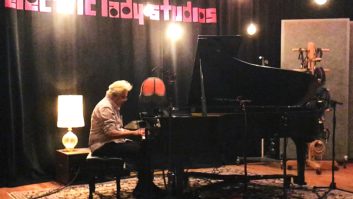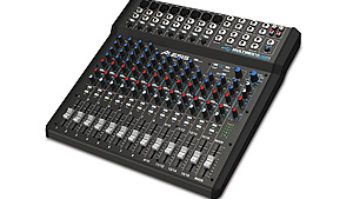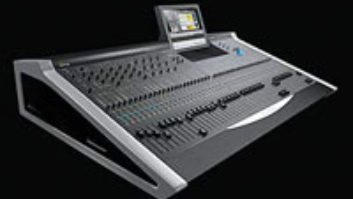In August Electric Lady Studios in New York City turns 50 years old, and as one of a handful of OG modern recording studios in the world, it’s still kicking, still hosting sessions and still reflecting the vibe of its original owner, Jimi Hendrix, at 52 West 8th Street. It’s dark inside, isolated from the world. It’s a musician’s playpen in that early 1970s, Golden Age of Recording, man-cave sort of way.
Not far away, at 520 West 27th Street in Tribeca, sits Jungle City Studios, the jewel of today’s New York City recording scene, owned and operated by Grammy-winning engineer Ann Mincieli, who does most of her work with the amazing Alicia Keys. It is also a musician’s playground, though it sits on the tenth floor and offers a view of the Highline through its floor-to-ceiling walls of glass, opening up to the magic of the city for inspiration. It is as light as Electric Lady is dark. It opened in 2011.
Both were designed by acclaimed architect John Storyk, and together they reflect both the consistency of his work over five decades and the changes in his style in adapting to modern trends. Back in the 1980s, he started introducing more glass and light into his designs, learning to work with the reflective surfaces rather than shying away from the inherent challenges. When digital technologies started to appear in the late 1980s, and the size and function of control rooms began to change, with more artists taking control of their own recordings, Storyk saw the changes ahead and his little company began to grow. He has always been in tune with the times.
“It seems odd now, but when I look back over the years, everything I’ve designed has been a project studio, even before the term existed,” Storyk says. “I’ve come to learn that the actual drawing, the physics, the geometry—that’s the easy part. The hard part is in finding that emotional connection of the owner or the artist to the space. It’s their room, their project studio, and it should reflect the way that they work. I’ve thought about that on every studio I’ve designed.”
Between Storyk himself and his team at Walters-Storyk Design Group, we’re talking about more than a thousand studios, all around the world, from traditional commercial music recording, to university teaching environments, to the emergence of today’s podcast facilities. To Storyk, each has its purpose; each reflects the owner’s passion. Studio design is the nexus of art, architecture and technology, he is fond of saying. And he seems happy today, talking from his second home in Akumal, Mexico, looking out at the Caribbean while his wife, Beth Walters, paints on a canvas in the background. Fifty years of living life at the nexus has turned out pretty well.
Last year, with the Electric Lady anniversary still many months away, the team at WSDG began planning a yearlong series of events to honor Storyk’s 50 years in studio design. It was to kick off with a grand party at Le Poisson Rouge, a restaurant he had designed, during the October 2019 AES Convention, followed by a series of celebrations throughout the year in different locales around the world. Deposits were made, signs were printed, and then one night, Storyk says, he woke up at 3 a.m. and thought to himself, “I can’t do this. It just doesn’t feel right. Fifty years. It feels like I’m being put out to pasture.”
He told the staff the next day, and, after the initial shock wore off, longtime friend Bob Skye piped in, “What if we call it ‘The First 50 Years?’” Storyk immediately changed his tune. “I can live with that,” he thought. A more intimate dinner was planned for close family and friends. His children flew in and surprised him. Eddie Kramer was there, as were Howie Schwartz, Howard Sherman and a host of clients, friends and colleagues. It was a wonderful night, much more fitting the Storyk style. Two days later, he was back at work.
That humility, of course, is countered by a bit of New York swagger. He is aware of what his work has meant to the industry at large. Storyk is a smart man, a tall man with a full head of hair and a wide range of interests, from the teachings of Richard Feynman to the world-changing innovations of the Wright Brothers. He is a student of architecture and the arts, going back to the Greeks. He studied philosophy at Princeton while pursuing his passion for architecture, a career path that had been whispering to him since age 11, around the same time he developed his passion for music. He spent the summer of 1969 studying with Buckminster Fuller. He likes Broadway musicals, and he’s a lifelong Yankees fan. He is a most interesting man.
For the past 30 years, every June issue of Mix has been focused on Acoustics and Studio Design, with the cover shot selected from among the dozens of entrants from the world’s top studio designers for the annual “Class Of” photo feature. This year, we chose to break form and honor John Storyk’s First 50 Years. He’s earned it.







